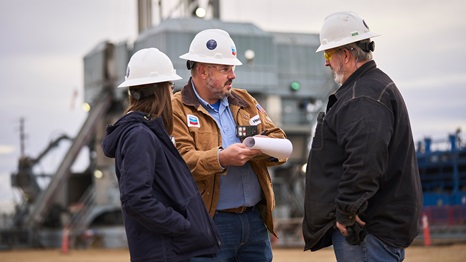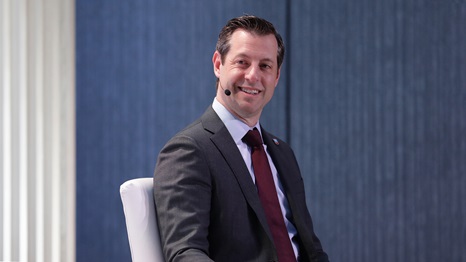emissions solutions
crowdsourcing carbon storage: app helps screen possible sites
2 min read | december 20, 2022
Looking at an image of the underground. We now have an app that helps us evaluate underground sites for their potential to store carbon dioxide safely and permanently.
The best people to solve a problem are the ones who face it daily.
We recognize that. At Chevron, we’ve developed a path that puts our employees in the driver’s seat to find solutions to challenges they encounter in their day-to-day work. One such employee-developed app helps us screen possible sites to store carbon dioxide (CO2).
the challenge
Our subsurface team of researchers and geologists found they didn’t have an easy-to-access storehouse of standardized information on each potential storage site. The variation in evaluation data slowed down the process of determining where we could store carbon dioxide safely and permanently underground. Carbon capture and storage calls for specific site features in order to function effectively, such as certain temperatures and pressures, and a naturally occurring rock that can form a seal over the stored CO2. What was available to the team was a shared spreadsheet rife with version control issues, missing information and other deficiencies.
meg miller
geologist
the solution
Chevron geologist Meg Miller, who works in the Carbon Capture, Utilization, and Storage group, sought the help of colleague Sarah Wright, an earth scientist who had participated in Chevron’s Citizen Developer Program to learn how to build low-code tools. Together with a team of experts who provided important questions that became the basis for the data input, they created an app that makes it easy to add, access and compare information about individual CO2 storage sites all around the world.
why it matters
Carbon capture and storage is an important part of lowering the carbon intensity of our own operations and of other industries that have a difficult time decreasing their emissions. Finding the right site to store carbon dioxide safely requires extensive evaluation and comparison to working sites to determine the best fit for the need.
The app speeds up the process, increases accuracy and standardizes the data used to determine whether to pursue a site.
a logical conclusion
sarah wright
earth scientist and app developer
topics covered
related content
-
 sharing data is benefiting emission reduction efforts
sharing data is benefiting emission reduction effortsemissions solutionsapril 04, 2024
-
 3 things to know about the future of hydrogen
3 things to know about the future of hydrogenemissions solutionsmarch 29, 2024
-
 laying the foundation to realize carbon capture’s potential
laying the foundation to realize carbon capture’s potentialemissions solutionsmarch 27, 2024
-
 global gas markets are changing: what it means
global gas markets are changing: what it meansemissions solutionsmarch 25, 2024
chevron email updates
Subscribe to our newsletter to receive news and updates.



